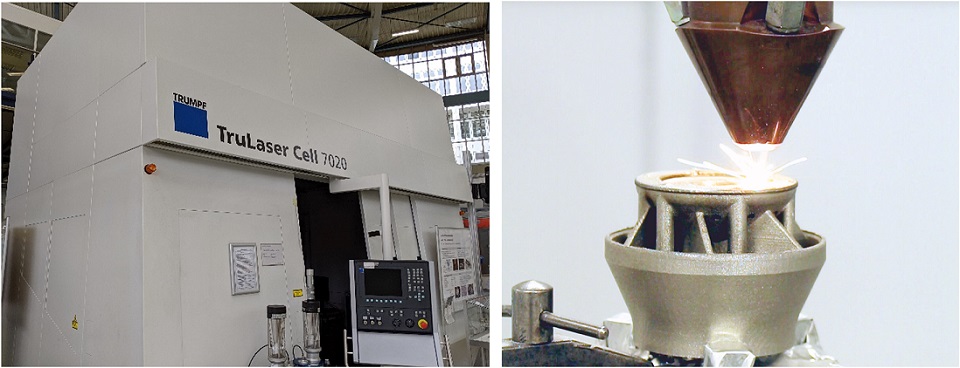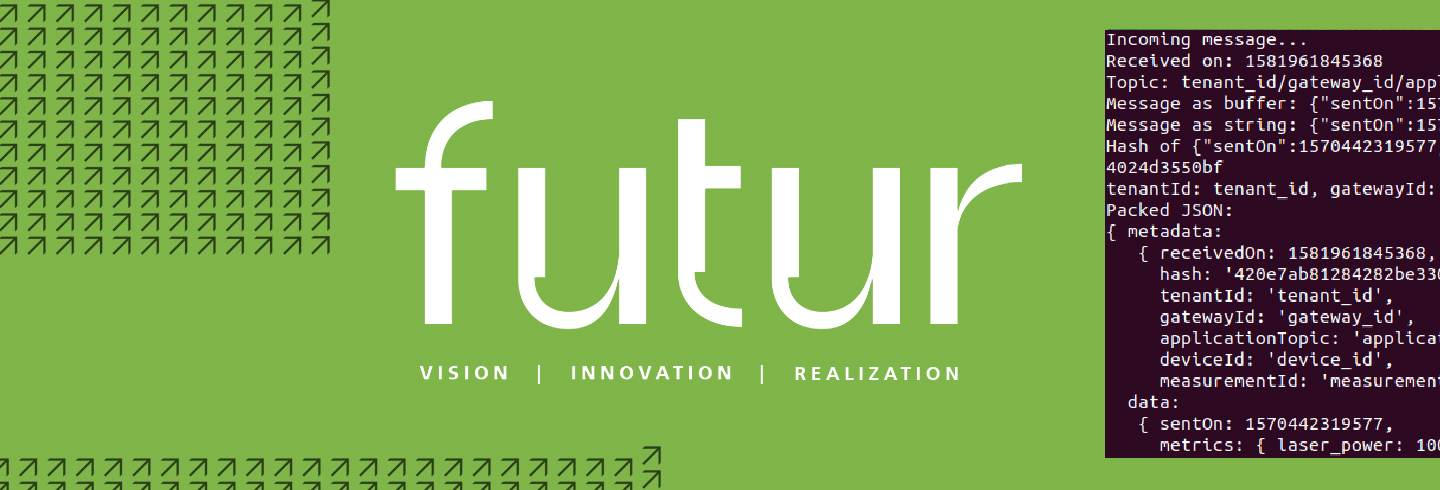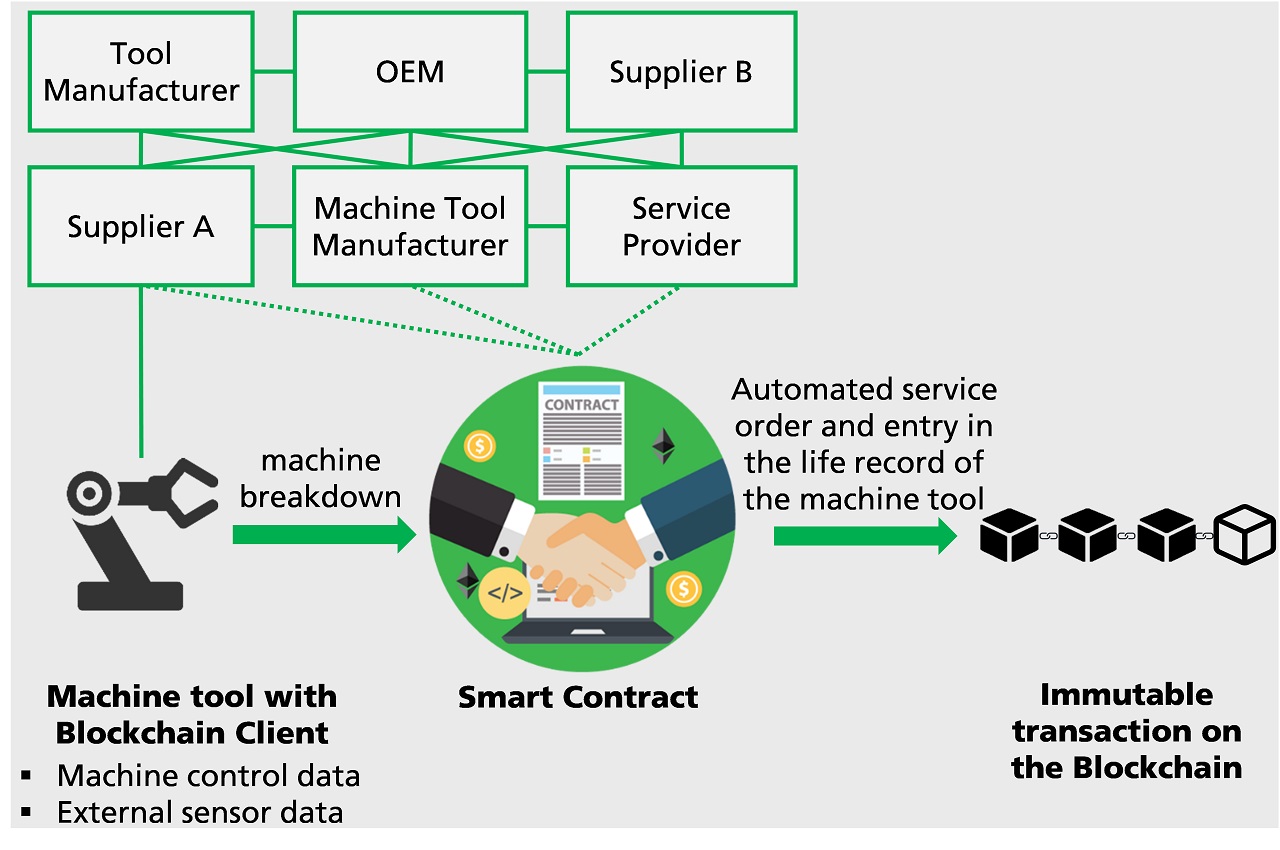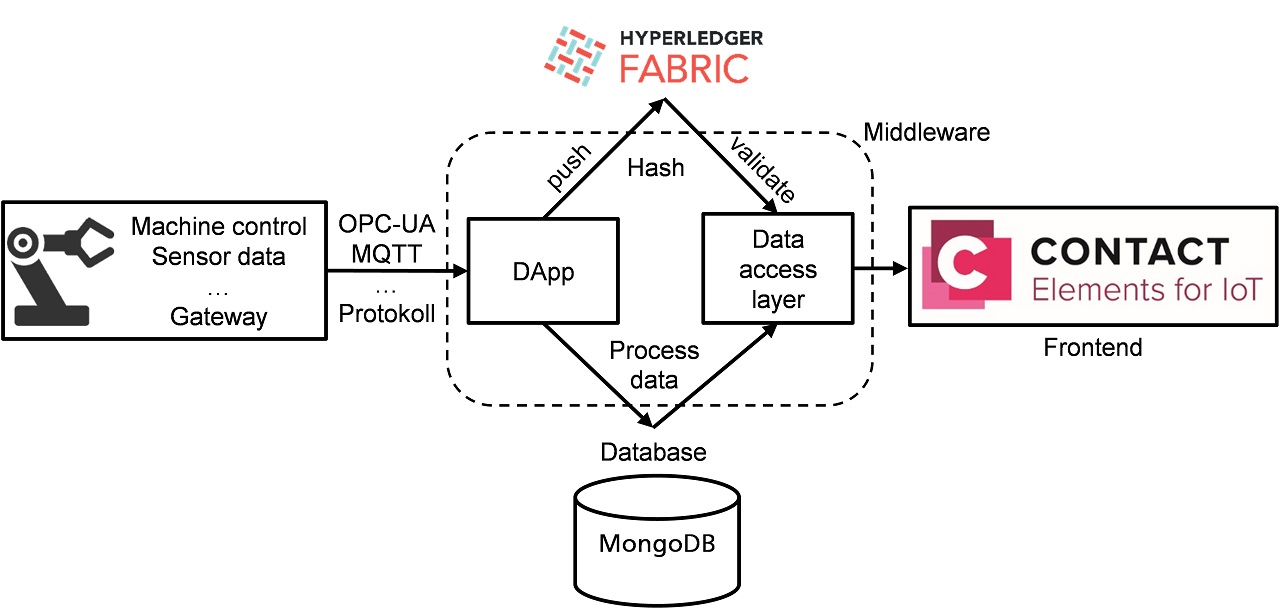Trust 4.0
Industrial manufacturing processes generate large amounts of process and sensor data, a major part of which currently remains unused. Companies involved in the manufacturing process could benefit from the analytical use of this data. However, highly specialised SMEs in particular are not ready to make sensitive process data available for use via vulnerable web services. Not even if modern machine tools and largely digitized, automated processes have already been implemented.
Distributed Ledger Technologies (DLT) such as blockchain offer the possibility to provide a basis of trust between parties with very different interests. This requires a high level of data security. By means of tokenization and cryptography, network participants can securely use process data without the other parties knowing it in detail. A token represents a process variable or a measured value that can be transferred on the blockchain. By exchanging tokens, machine tools can interact with each other and learn to act profitably, avoid downtimes or predictively order spare parts and machine services by executing smart contracts.
In order to investigate the potential of DLT for applications in Industry 4.0, a research team at the Fraunhofer IPK has carried out a proof of concept with a Trumpf »TruLaser Cell 7020« machine for Laser Metal Deposition (LMD). The Additive Manufacturing process is mainly used to coat or repair conventionally manufactured components, using a laser beam that creates a melt pool on the surface of the workpiece. Powdered filler material is deposited into this melt pool layer by layer via a head nozzle, which creates the new workpiece contour.
An OPC UA server is implemented in the laser control system, which can be used to access relevant process data such as the laser power and maintenance messages in JSON format. The immutable, complete history of this data allows for conclusions about unwanted process interruptions, the operation of unauthorized operating conditions or the neglect of necessary machine maintenance, among other things.

An OPC UA client transfers the raw data in JSON format to a Smart Contract based middleware (decentralized application, short: dApp). This transfer is based on the IoT protocol MQTT (Message Queuing Telemetry Transport). The dApp creates a hash from the data. The hash is stored in a private blockchain with access control created with the framework Hyperledger Fabric (HLF). The process data is stored in a MongoDB database.
The IoT platform Elements for IoT from Contact Software serves as the frontend. For this purpose, the dApp provides a RESTful API that enables Elements for IoT to receive or query the authenticated data from the HLF network. Within the industrially established IoT software, a digital twin of the process or the machine tool can then be created. Elements for IoT also offers comprehensive monitoring and analysis tools as well as interfaces to ERP, PLM and CRM systems, through which orders and other business processes can be triggered.
The following shows a transaction in the HLF blockchain when the laser power is changed to 100 W. The metadata and metrics are stored in MongoDB.

HLF can thus also be used in the area of Industry 4.0. The easiest way to connect machine tools to the network is OPC UA in combination with a simple gateway, for example a Raspberry Pi. The effort for connecting to the machine tool and setting up a Hyperledger blockchain according to requirements is currently still relatively high and requires both profound IT knowledge and programming experience. Therefore the framework is highly flexible and customizable. Features such as membership service provider (MSP), access control lists (ACLs) and channels make it possible to define differentiated roles and rights of all network participants.
Blockchain and DLT promise numerous advantages in the digitization of manufacturing processes: from greater transparency in real time to a higher degree of automation. More specifically, this means that throughput times can be shortened, machine utilization increased and bureaucracy in ordering processes reduced. The blockchain acts as a »trust layer« between the parties involved in the manufacturing process, on which various applications can be built. Possible applications include process quality control, predictive ordering of machine service or spare parts, dynamic and usage-dependent warranty models, and the implementation of real-time leasing models for machine tools.
Hyperledger can act as a link between consortium blockchains with access control (»permissioned«) and public blockchains (»permissionless«). One of the most comprehensive current developments of Hyperledger is the Java-based Ethereum Client Hyperledger Besu, which serves as an interface between different blockchains due to cross-chain transactions. It is conceivable that permissioned blockchains, based on the frameworks offered by Hyperledger, communicate with the Ethereum blockchain as required, for example to synchronize their status.
In the future, interoperable consortium blockchains could enable the tokenization of all types of assets as well as integration into ERP and CRM systems of companies, and thus largely automated certification and auditing. The recently published Baseline Protocol is a further step towards the interoperability of private and public blockchains, such as the Ethereum mainnet. However, a wide acceptance of blockchain applications in the field of Industry 4.0 will require many further studies and pilot projects.
 Fraunhofer Institute for Production Systems and Design Technology
Fraunhofer Institute for Production Systems and Design Technology

